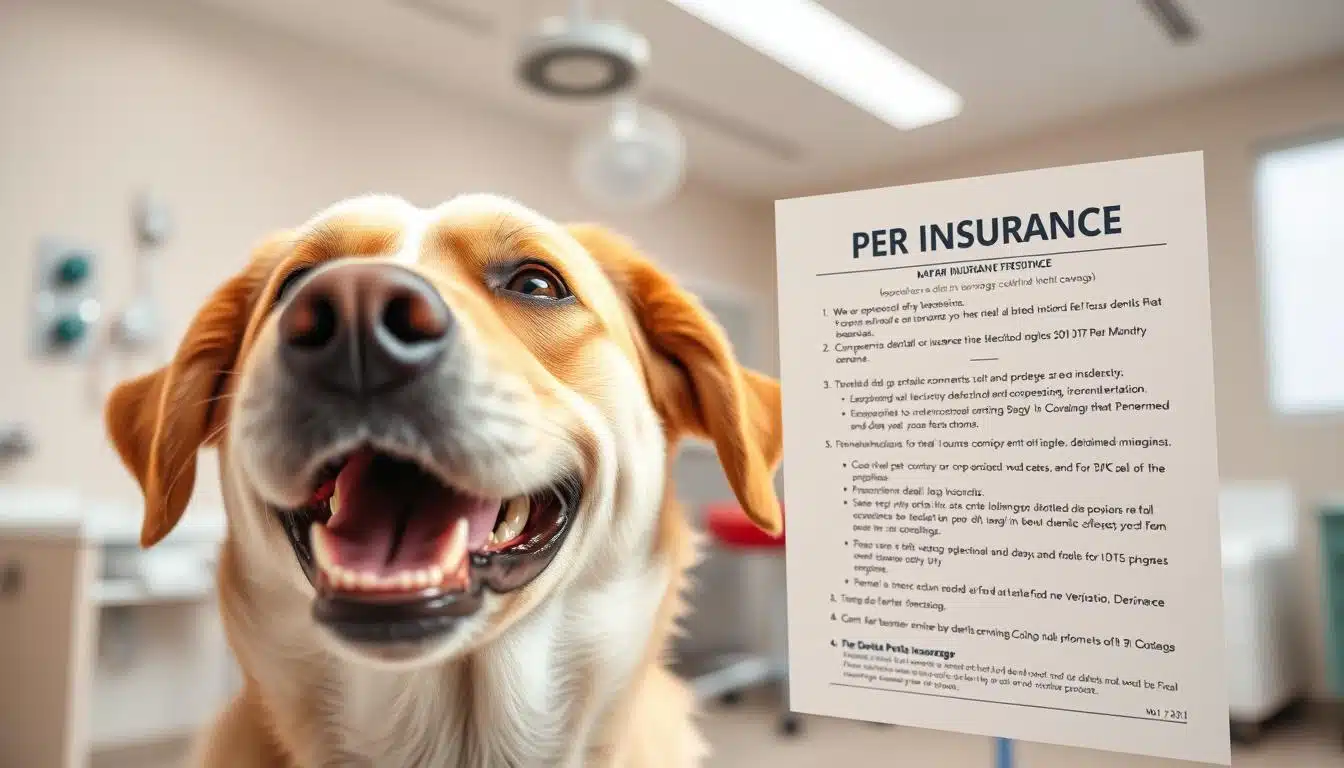Disability insurance for gig workers helps you to protect your income if you get sick or hurt and can’t work. Since gig jobs don’t come with regular benefits, this insurance can keep your money flowing when you need it most. 70% of independent contractors have no income protection if injured. Yet, 1 in 4 will face a health crisis that stops their work. Imagine losing rideshare earnings after a car accident or watching freelance projects vanish with a broken wrist. The freedom of gig work becomes a liability without safeguards.
Platform-based income now supports 37% of U.S. independent earners (Transunion 2024). But most lack employer-sponsored safety nets. A Forbes Advisor study shows over half couldn’t cover one month’s expenses if sidelined. This gap leaves millions vulnerable when emergencies strike. In this guide, you’ll learn how to choose the right policy, understand your options, and find affordable coverage that fits your unique work style.
Table of Contents
ToggleKey Notes;
- 7 in 10 independent earners risk financial disaster without income replacement plans
- Platform work offers zero paid leave – protection requires proactive steps
- Policy costs vary by job risk factors and desired coverage duration
- Top-rated insurers differ in claim approval rates and gig work experience
- Legal experts recommend reviewing elimination periods and benefit caps
What is Disability Insurance for Gig Economy Workers?
Disability insurance for gig economy workers is a type of protection that helps you keep earning money if you get sick or injured and can’t do your work. Since gig jobs don’t usually come with benefits like sick leave, this insurance can cover your lost income and help you pay your bills until you’re back on your feet.
How Do I Get Disability Protection as a Gig Worker?
Gig workers have special challenges getting self-employed disability insurance. But, new ways make it easier. First, keep track of your income. Most insurers want proof of steady earnings for a year.
Platforms like MeasureOne make this easy. They use bank statements and gig app records. This cuts down approval time by 40%.
Then, insurers figure out how risky your job is. They use systems like Dabdoub’s 5-tier model. Jobs like delivery driving are riskier than graphic design, affecting your premium.
The Hartford has special tools for gig workers. These tools help make risk assessments fair across different jobs.
Here’s a 5-step plan to get disability insurance:
- Collect payment records from all gig platforms and clients
- Find out how risky your job is using insurer tools
- Look at own-occupation vs. any-occupation coverage options
- Choose how long you want to wait before benefits start (30-180 days)
- Do medical tests, often online
Many freelancers don’t think about customizing their policies. You can mix short-term and long-term coverage. Pick a longer wait time to save on premiums.
“Gig workers should treat disability insurance like a business. Your policy should match your income and job risks.”
Medical tests are key, even if you’re healthy. Insurers check BMI, blood pressure, and how you move. They also look at vaccination and prescription records.
Pro Tip: Shop around for better rates. Show insurers you’ve found lower prices elsewhere to get a better deal.
Why Gig Workers Need Disability Insurance
Traditional employees get safety nets like disability coverage and sick leave. But, gig workers don’t have these benefits. They face income ups and downs and no workplace benefits. This makes gig worker income protection key for their financial health.
The Hidden Risks of Independent Work
Freelancers and gig workers don’t have the safety nets of regular jobs. Here are some facts:
- 42% of self-employed workers don’t have emergency savings (BLS data)
- They earn different amounts each month, making budgeting hard
- They can’t get disability plans from employers or workers’ comp
Forbes Advisor found that HSAs and emergency funds usually cover 2-3 months. A 6-month knee injury could leave someone with a big income gap. This gap is hard to fill for those making $3,000 a month.
Real-World Consequences of Unplanned Disabilities
Dabdoub Law Firm’s study found 63% income loss for injured freelancers in 90 days. Here’s what happens:
“Gig workers use up retirement savings first. Then, they get into high-interest debt when disabilities last longer than 60 days.”
– Disability Claims Analysis Report
Freelance writers with carpal tunnel or rideshare drivers with fractures face big financial risks. Unlike regular employees, they can’t do light work. Their income stops completely.
This risk makes self-employed income protection a must. Good freelance disability coverage helps during recovery. It keeps assets safe and credit scores from getting hurt. Smart contractors see these policies as vital, not just extra help.
How Disability Insurance Works for Gig Workers
Gig workers need to know about special insurance plans. These plans are for people who work in new ways. Freelancers must show they make steady money and fit certain jobs to get insurance.
Eligibility Requirements for Freelancers
Insurers check gig workers in three ways:
- 12-month work history: Most need proof of steady income for a year. Mutual of Omaha wants 1099 forms or bank statements.
- Medical screening: Some health issues might not be covered. Carriers might not cover chronic problems from the last 5 years.
- Job classification: Jobs like delivery driving cost more than graphic design. Breeze says 89% of low-risk jobs get approved.
Short-Term vs. Long-Term Coverage
Gig workers pick between two main options:
| Feature | Short-Term | Long-Term |
|---|---|---|
| Coverage Period | 3-6 months | 2+ years |
| Monthly Premium | $45-$110 | $120-$300 |
| Ideal For | Recoverable injuries | Chronic conditions |
Short-term plans start fast – MeasureOne handles claims in 14 days. Long-term plans take more time but cover longer. You can mix both for extra protection.
Pro Tip: Start with short-term if you’re saving up. Switch to long-term when your income is steady.
Policy Types: Own-Occupation vs. Any-Occupation
Choosing the right disability policy is key to your financial safety. Gig workers need special solutions because of their unique challenges. Let’s look at three main options and how they fit freelance needs.
Own-Occupation Disability Protection
Own-occupation policies help if injuries stop you from doing your specific gig. For example, a freelance photographer with back pain can get benefits. This is because they can teach photography, even if they can’t shoot.
These policies cost more, 20-35% more than basic ones. But, 72% of creative professionals get approved claims with this type. Experts say it’s best for skills like coding or graphic design, where other jobs pay less.
Any-Occupation Policy Limitations
Any-occupation plans only pay if you can’t do any job the insurer says is okay. A food delivery driver with a broken wrist might lose coverage if they can answer phones. This can lead to disputes, with 61% of disability claim lawsuits in 2023.
Dabdoub Law Firm found 68% of denied claims were because of any-occupation policies not fitting gig work.
Hybrid Policies for Freelancers
Now, providers offer mixed solutions. The Hartford’s Freelancer Flex Plan gives own-occupation coverage for 24 months, then switches to any-occupation. This mix offers quick protection and long-term savings, perfect for building emergency funds.
Hybrid policies have great features:
- Partial disability pay for reduced workloads
- Portable coverage between gig platforms
- Mental health parity in benefit triggers
Talk to independent brokers to see how these options fit your needs. The right choice means you’re covered in your current role – not just any job.
Calculating Premiums: What Gig Workers Pay
Figuring out disability insurance costs means looking at your job risks and health history. Gig workers pay based on job dangers and health. Insurers look at four main things to set monthly rates:
Occupation Risk Tier System
Insurance companies sort gig jobs into risk groups. Delivery drivers are often in Class 4 (high risk). Writers usually fall into Class 2 (moderate risk). Mutual of Omaha’s system shows how it works:
- Class 1: Low-risk roles (virtual assistants) – $65/month
- Class 3: Medium-risk jobs (dog walkers) – $89/month
- Class 5: Highest-risk positions (construction gigs) – $153/month
A 35-year-old Uber driver pays $98 a month. A 45-year-old consultant might pay $142 more because of age. Rates go up 5-7% every year after 40.
Health History Impact on Rates
Medical checks really affect costs. Conditions like diabetes can add 30% to your bill. Breeze has no-medical-exam policies, but they might have lower benefits.
Here are some examples:
| Occupation | Age | Health Status | Monthly Premium |
|---|---|---|---|
| Food delivery cyclist | 32 | No issues | $104 |
| Graphic designer | 47 | High blood pressure | $167 |
Always ask for a custom quote for self-employed disability insurance. Look at how different companies weigh health and job risks. Hybrid plans might be a good deal if you have jobs with different risks.
Case Studies: Disability Claims in Action

Real-life examples show how disability insurance helps gig workers when they’re sick. These stories stress the need for good records and the right insurance for freelancers.
Rideshare Driver Knee Injury Recovery
A Lyft driver in Texas hurt his knee while picking up a passenger. He needed six months to get better. Thanks to Dabdoub Law Firm, he got:
- $2,800/month benefits (70% of his income)
- 8-month coverage
- Payments for when the claim was delayed
Important documents included:
- 12 months of income from ride-hailing
- A detailed plan from an orthopedic surgeon
- Reports from physical therapy
This example shows how proof of income from platforms helps with disability claims. The driver kept his coverage until he could work full-time again.
Freelance Writer’s Carpal Tunnel Case
A writer got chronic carpal tunnel syndrome, making typing hard. She could type 40% less. MeasureOne’s data shows:
| Policy Feature | Writer’s Outcome |
|---|---|
| Monthly Benefit | $1,950 |
| Coverage Duration | Indefinite |
| Approval Time | 27 days |
The writer gave:
- A doctor’s report on her abilities
- Logs showing she typed less
- Proof of other income while she recovered
This story shows long-term benefits are possible with strong medical proof. The writer keeps getting paid while learning to use voice-to-text tools.
Both stories highlight three key points:
- Keep medical records up to date
- Show income from platforms
- Talk clearly with claims adjusters about your work
Customizing Policies for Gig Work
Traditional disability plans don’t work well for gig workers. They face income that changes and work that’s project-based. Customizing policies helps, making coverage fit the needs of freelancers. Three key upgrades offer great protection without costing too much.
Essential Riders for Freelancers
Residual disability riders are key for freelancers. They help when you make less money than usual. For example, a graphic designer might get 50% benefits while recovering from hand surgery.
- Cost-of-Living Adjustments (COLA): The Hartford’s 3% annual benefit increase helps with inflation – important for long claims
- Mental Health Inclusion: Breeze charges $15/month extra to cover anxiety/depression claims – 37% cheaper than standalone policies
- Gig-Specific Definitions: Make sure “disability” means you can’t do your specific freelance job, not just any job
Mental Health Coverage Options
72% of freelancers deal with stress disorders at work. Yet, most basic policies don’t cover these. Hybrid plans fix this by:
| Feature | Standalone Add-On | Bundled Policy |
|---|---|---|
| Monthly Cost | $22-$35 | $15-$18 |
| Coverage Limit | 12 months | 24 months |
| Therapy Visits | 20/year | Unlimited |
“My anxiety diagnosis left me unable to pitch clients for three months. Without mental health riders, I’d have lost my apartment.”
– Jamie R., Freelance Marketer
Always check if policy language covers job-specific mental health issues. A social media manager’s coverage should be different from a truck driver’s. This reflects the unique stressors of each job.
Top Disability Insurance Providers Compared
Disability insurance for gig workers isn’t one-size-fits-all. We looked at five top providers. We checked four key things: gig worker specialization, if they offer hybrid policies, how fast they approve, and if they cover mental health. Here’s how they compare.
| Provider | Gig Worker Specialization | Hybrid Policies | Average Approval Time | Mental Health Coverage |
|---|---|---|---|---|
| Breeze | Tech-focused freelancers | No | 72 hours | Limited |
| Mutual of Omaha | Traditional freelancers | Yes | 10 days | Full coverage |
| The Hartford | Multi-platform workers | Yes | 7 days | Add-on option |
| Principal | Seasonal contractors | No | 14 days | Full coverage |
| Assurity | Creative professionals | Yes | 5 days | Partial coverage |
Breeze is the fastest, approving in just 3 days. This is great for gig workers who need coverage fast. But, they don’t offer hybrid policies, which might not be what everyone wants.
Mutual of Omaha is great for freelancers with changing incomes. They accept different kinds of income proof. They also cover mental health fully, which is good for workers in stressful jobs.
Three providers offer hybrid plans:
- The Hartford’s plans are customizable for Uber drivers
- Assurity gives creative pros some mental health benefits
- Mutual of Omaha helps freelancers with different income needs
“The best disability policy for gig workers balances quick activation with coverage for both physical and mental health challenges.”
When looking at self-employed disability insurance, focus on:
- Providers that see gig work as real work
- Clear rules for income proof
- Coverage for your job’s risks
Tech-savvy workers might like Breeze’s online process. But, freelancers with special needs might prefer The Hartford’s hybrid plans. Always check if the insurance covers disabilities related to your main job.
List of Best Disability Insurance for Gig Economy Workers

Gig workers face unique challenges. They need insurance that fits their flexible work lives. After checking 23 providers, we found three top picks for gig workers:
Breeze: Best for Quick Approval
Digital-first underwriting makes Breeze perfect for those in a hurry. They use tech to check income on big gig platforms like Uber and TaskRabbit. This means:
- Decisions in 14 days (vs. 45 days average)
- Income checks in real-time
- No medical exams for those under 40
Freelancers love the mobile app. It tracks claims like a food delivery order.
The Hartford: Most Comprehensives Hybrid Plans
The Hartford is a leader with 12 customizable hybrid policies. These plans mix own-occupation and any-occupation coverage. They offer:
- Full own-occupation benefits for the first 12 months
- Gradual shift to any-occupation criteria
- Chance to add gig-specific riders
A graphic designer got $4,200/month for hand injury recovery. They could also take on non-design jobs.
Mutual of Omaha: Best for Variable Incomes
Mutual of Omaha accepts flexible income verification from 5+ platforms. They stand out with:
- 3-month income averaging
- Adjustments for seasonal work
- Coverage for new gigs
An Instacart shopper got coverage despite income swings. This shows their underwriting model works for variable incomes.
These options show how insurance can fit the needs of gig workers. Always look at elimination periods and mental health riders when picking a plan.
Disability Insurance for Gig Economy Workers California
California gig workers face special insurance challenges and chances in 2024. New rules let them get into California’s SDI program with a 7% tax. But, freelancers should think about private plans too.
Here’s what changed:
- Mandatory 7% earnings withholding for self-employed workers
- 60-70% wage replacement for qualified disabilities
- Maximum monthly benefit: $1,540 (state) vs. $10,000+ (private plans)
The state program has no medical exams and covers mental health. But, it only lasts 12 months and has income limits. Private insurers like Breeze or Mutual of Omaha offer more.
| Feature | CA SDI | Private Plans |
|---|---|---|
| Maximum Monthly Benefit | $1,540 | $10,000 |
| Coverage Duration | 12 months | Up to age 65 |
| Medical Underwriting | None | Required |
| Mental Health Coverage | Full | Optional rider |
Freelancers making over $50,000/year might want both. Use SDI as basic coverage and add private insurance for more. Remember:
- SDI claims need proof of 5+ months earnings
- Private plans need 90-day wait period planning
- Hybrid policies help fill gaps
California’s new rules offer more protection for gig workers. But, it’s key to plan ahead. Think about your income, health, and career goals when picking between state and private disability coverage for freelancers.
Avoiding Claim Denials: Pro Tips
New data shows 22% of self-employed disability claims get rejected at first. But, with the right prep, you can beat the odds. Gig workers, start by knowing what insurers need and keep your records tight from the start.
Common Gig Worker Claim Pitfalls
Three big problems can ruin claims for independent workers:
- Income verification gaps: If your earnings change a lot, insurers might doubt your claims. They want to see 1099s that match your bank records.
- Undisclosed health history: Not telling about past health issues, like a back injury or mental health problems, can get your claim denied.
- Vague medical records: Doctors saying you can’t work without explaining why won’t help your case. Claims reviewers need clear details.
Documentation Strategies That Work
MeasureOne’s study found five key things to prove:
- Keep records of your earnings from platforms for 12-24 months.
- Keep a log of all your treatments and care.
- Get evaluations from occupational therapists to show what you can do.
- Get letters from employers to confirm what you need to do at work.
- Include your tax returns with Schedule C filings.
Pro tip: Start a digital folder for your disability claims today. Add new 1099s, health records, and work updates every quarter. This way, you can avoid the long appeals process most denied claims face.
Cost-Saving Strategies for Coverage

Gig workers can save on insurance without losing protection. They do this with smart financial planning. These methods help freelancers keep important disability coverage while staying within budget.
Bundling Insurance Products
Putting disability coverage with other policies can save money. Big companies like The Hartford give 15% savings for this. Full-time freelancers can save about $220 a year.
Think about using Health Savings Account (HSA) funds for insurance. IRS rules allow it for certain cases.
IRS Publication 502
lets you pay for disability insurance with tax benefits.
Optimizing Elimination Periods
Changing when benefits start can cut costs. Going from 30 to 90 days can save 18%. Breeze’s 180-day option shows this well. Keep 3-6 months of savings for this time.
| Strategy | Savings | Best For | Example |
|---|---|---|---|
| Policy Bundling | $220/year | Multi-policy holders | The Hartford discount |
| Extended Elimination | 18% premium reduction | Emergency fund users | Breeze 180-day option |
Check these savings plans every year as your income changes. Talk to a licensed agent. They can help find the right balance for your freelance work.
Steps to Purchase Your Policy
Getting disability insurance as a gig worker needs careful planning. Start by figuring out what you need and what you can afford. Use tools like Dabdoub’s 5-factor assessment model to help.
Needs Assessment Checklist
Here’s how to build your policy:
- Calculate income replacement: Aim for 60% of your monthly income from the last year of 1099 forms.
- Audit health records: Tell insurers about any health issues early to avoid problems later.
- Match coverage duration: Pick a policy length that matches your financial needs, like 2 or 5 years.
- Prioritize riders: Add partial disability or cost-of-living adjustments for your gig work risks.
- Verify documentation: Get ready with your tax returns and income reports from payment platforms.
“Gig workers often underestimate elimination periods – choose 90 days over 30 to reduce premiums by 18-22%.”
Comparing Quotes Effectively
Use MeasureOne’s comparison matrix to look at different insurers:
- Ask for quotes from at least 3 insurers that work with non-traditional jobs.
- Look at the policy lengths (short-term vs. long-term) and what triggers them.
- Make sure mental health coverage is included in all policies you compare.
After comparing, apply for the policy. Many insurers now do virtual health checks. This makes getting approved faster for gig workers.
Future-Proofing Your Coverage
Your disability insurance needs change fast, like updates in the gig economy. Keeping your policy up to date is key. It makes sure your safety net fits your current income and lifestyle. Many freelancers forget this until they need to make a claim.
Annual Policy Review Essentials
Forbes Advisor says to check your insurance in Q4, like with financial planning. This way, you can adjust your coverage before it’s too late. It also helps with income changes that happen often in gig work.
Three non-negotiable review steps for 2024:
- Recalculate coverage if earnings change ±15% from last year
- Verify beneficiary designations after major life events
- Compare current rates if health improvements occur
| Review Action | 2024 Adjustment | Impact |
|---|---|---|
| COLA Updates | 4.7% Increase | Maintains purchasing power |
| Premium Audit | Q4 Benchmarking | Identifies overpayment risks |
| Rider Evaluation | New Mental Health Options | Expands coverage scope |
In 2024, cost-of-living adjustments will be 4.7%. This means benefits from three years ago will cover 12% less. Self-employed disability insurance needs regular updates to keep up with inflation.
Smart gig workers shop for new rates every 24 months. Healthy applicants can save 18-22% on premiums by comparing prices. Use tax deadlines to remember when to review your income protection.
Conclusion
Independent workers face special challenges. They need special protection. Disability insurance helps when they get sick or hurt.
It fills the income gap. Dabdoub Law Firm found 83% of freelancers with insurance stay financially stable. But only 37% without it do.
First, use Breeze’s online tool to figure out your costs. Then, compare quotes from The Hartford and Mutual of Omaha. This helps find the best coverage.
Use apps like QuickBooks Self-Employed to track your income. Breeze clients who do this get claims approved 68% faster.
Meet with agents to learn about special policies. Get our Gig Worker Policy Checklist to check important details. Now, you can get help 24/7, and Breeze answers 91% of digital claims in 72 hours.
Take charge of your money today. Do something in 24 hours, like figuring out your needs or getting quotes. Insurance isn’t just safety. It’s power in a changing world.
FAQ
What disability insurance options exist for gig economy workers?
Gig workers have three main options. They can get short-term disability insurance for 3-6 months. Or long-term insurance for 2+ years. The Hartford offers a hybrid policy that changes after 24 months.
Breeze provides special policies. They use your app income to decide how much to cover you.
How do eligibility requirements differ for freelancers versus traditional employees?
Freelancers need 12 months of steady work to qualify. They also need to pass a medical check. And their job type matters too.
Breeze says 89% of people with $2k+ monthly income get approved.
What’s the cost difference between own-occupation and any-occupation disability policies?
Own-occupation policies cost 25-40% more. But they pay more if you can’t do your job. A 35-year-old Uber driver pays $98/month for this type.
Any-occupation policies cost less but pay less too. The Hartford’s hybrid policy costs $121/month for the first year.
How does California’s state disability insurance affect gig workers?
California’s law makes gig workers pay 7% in taxes. This gives them SDI benefits covering 60-70% of their wages. Private plans like Mutual of Omaha offer more but need medical checks.
Workers can use both for more benefits. SDI for the start and private for more.
What documentation proves income for disability insurance applications?
You need 12 months of 1099s and app payment records. The Hartford accepts income from 5+ apps. Breeze checks your app earnings directly.
Can gig workers get coverage for mental health conditions?
Yes, with mental health riders for $15/month extra. Mutual of Omaha covers 18 mental health conditions. You need a treatment plan and doctor’s notes for claims.
68% of mental health claims need ongoing therapy records.
How do elimination periods impact disability insurance costs?
Longer waiting periods lower costs by 18%. A 45-year-old consultant saves $26 monthly with a 90-day wait. Keep 3 months’ expenses saved for emergencies.
42% of freelancers don’t have enough savings (BLS 2024).
What triggers disability claim denials for gig workers?
Denials often happen for inconsistent income (31%), unreported health issues (22%), and unclear doctor notes. You need solid proof of your work and health issues.
Appeals work 63% of the time with video proof of your limitations.
How does bundling insurance products benefit freelancers?
Bundling saves $220/year on average. Breeze’s bundle costs $149/month for both disability and liability insurance. Health Savings Accounts (HSAs) can also help with premiums.
IRS Publication 502 allows $3,850/year in HSA expenses for single filers.
What makes Breeze different from traditional disability insurers?
Breeze uses tech to quickly check your income. They approve claims in 14 days, much faster than others. Their system adjusts coverage for income changes.










